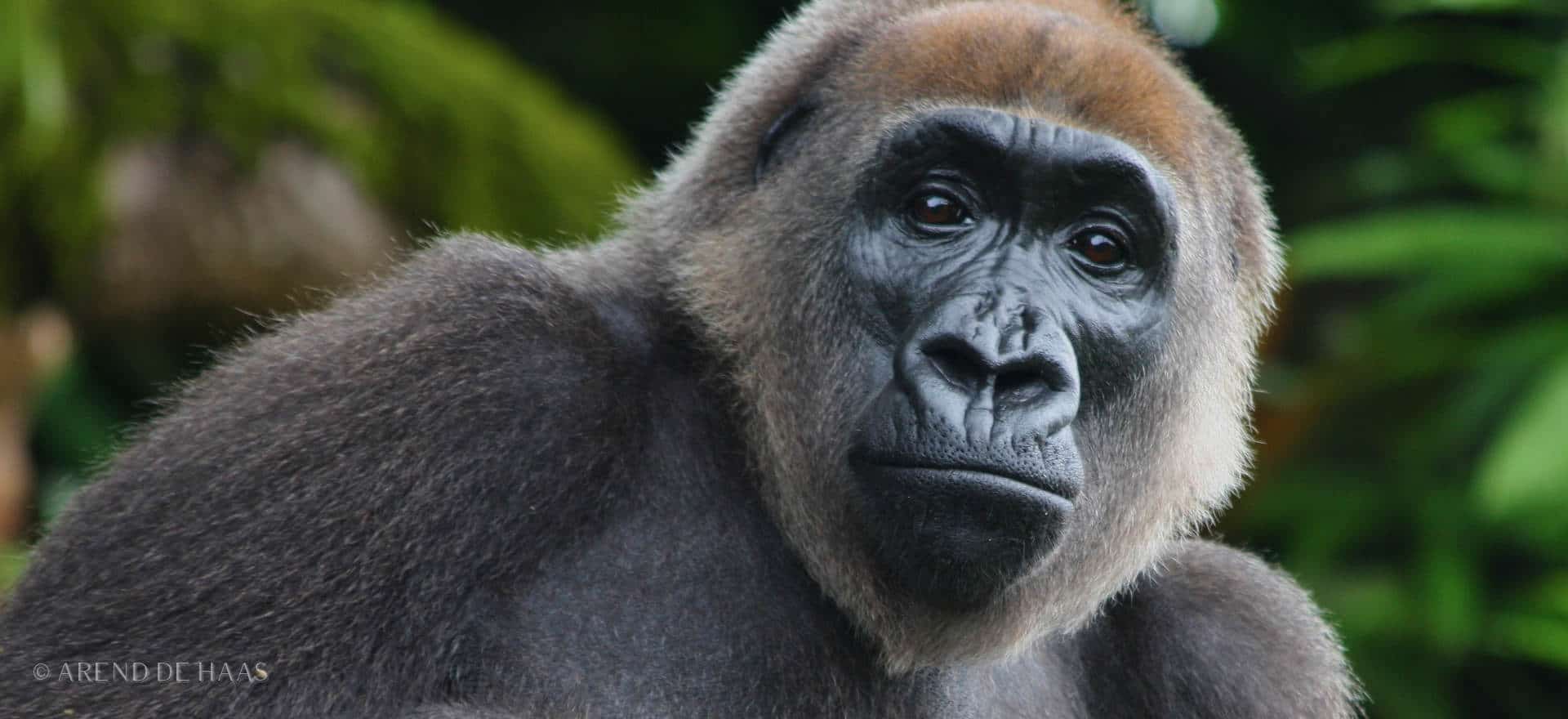Gorilla Subspecies
There are two different species of gorilla, each split into two subspecies:
Table 1: Subspecies and Population Sizes of Gorillas
| Western Gorilla | Western Gorilla | Eastern Gorilla | Eastern Gorilla |
|---|---|---|---|
| Cross River Gorilla (Gorilla gorilla diehli) | Western Lowland Gorilla (Gorilla gorilla gorilla) | Mountain Gorilla (Gorilla beringei beringei) | Eastern Lowland Gorilla (Gorilla beringei graueri) |
| 250-300 | 316,000 | 1100 | 5000 |
Gorillas are stocky apes with large hands, and forearms much shorter than their upper arms. They have small eyes, placed close together, and large, prominent nostrils. Black hair covers the body, except for the face, ears, hands and feet. Western gorillas have a greyer coat than eastern gorillas, and often have reddish hair, particularly on the head, which in males can be a striking chestnut. Mature males have a saddle of lighter, grey hair that stretches around the back and thighs, hence their being called ‘silverbacks’.
Much of what we know about the behaviour of gorillas comes from studies of the Mountain Gorilla. Studies of the other subspecies have found differences in socio-ecology. The Cross River Gorilla needs much more study before we can fully understand it.
Gorillas spend most of their time on the ground, usually walking on all fours, on the knuckles of their hands, although they can walk just on the two hind legs. They can also climb trees, and may build their nests up there. Females and infants are more likely to sleep in the trees than males. A new nest is built each day; the group usually moves on in search of fresh food supplies. Time is spent alternating between rest periods and travel or foraging. They feed on herbaceous vegetation, and fruit such as bananas, when it is available. Some gorillas have been found eating ants and termites, but these insects are rare at higher altitudes.
Vocal communication is important for gorillas, and they make a variety of calls directed at other members of their own group, or at other groups. Different noises are made during play, mating, or when a predator is spotted, for instance. The males make threatening calls and may beat their chests when encountering rival males.
Generally speaking, gorillas form groups of one dominant male, known as the silverback, with a number of breeding females, and their offspring. Occasionally there may be more than one mature male in the group, and adult males will also sometimes live alone or with other bachelor males. Young male and female gorillas sometimes leave their natal groups and join another group, or form a new one of their own. It is the silverback who holds the group together, protecting the infants against predators and attacks by other male gorillas, so if he dies the group may break up, with the females leaving to search for a new breeding group. Sometimes a subordinate male will take over instead, and in the Eastern Lowland Gorilla the females may remain as a group, waiting for a male to join them and take over leadership.
The relationship between the silverback and the females is therefore essential to keeping the group together, and they spend a lot of time in mutual grooming. Females are closer to others of the same maternal line, and may become aggressive with each other, particularly over access to the male. When there are multiple males in the group there will be a strong dominance hierarchy, although when males live together in non-breeding groups they are more amicable, and will groom and play with each other.
The silverback, as well as protecting the group from outside threats, will intervene when females become too aggressive with each other, or if an older member of the group is too rough with one of the infants. The male does not become a silverback until he is about 12 years old, but even then he will continue growing until he is 15.
Females are unlikely to mate before they are 10 years old, and then do so only every four or five years. They are unable to fall pregnant while nursing an infant, and it takes this length of time before the young gorilla is fully weaned. There is no specific mating season. The female will initiate mating, or become receptive to the male’s advances every 30 days, unless she is pregnant or lactating. Pregnancy lasts for 8.5 months.
Young gorillas need a lot of care. For the first 5 months they remain in constant contact with their mother, and she will keep close to the silverback. Gradually the infant will spend more time away from its mother, and will gain the confidence to move further away from her. It will play with other members of the group, even the huge silverback, and after it has been weaned and has reached adulthood it may leave the group completely.

